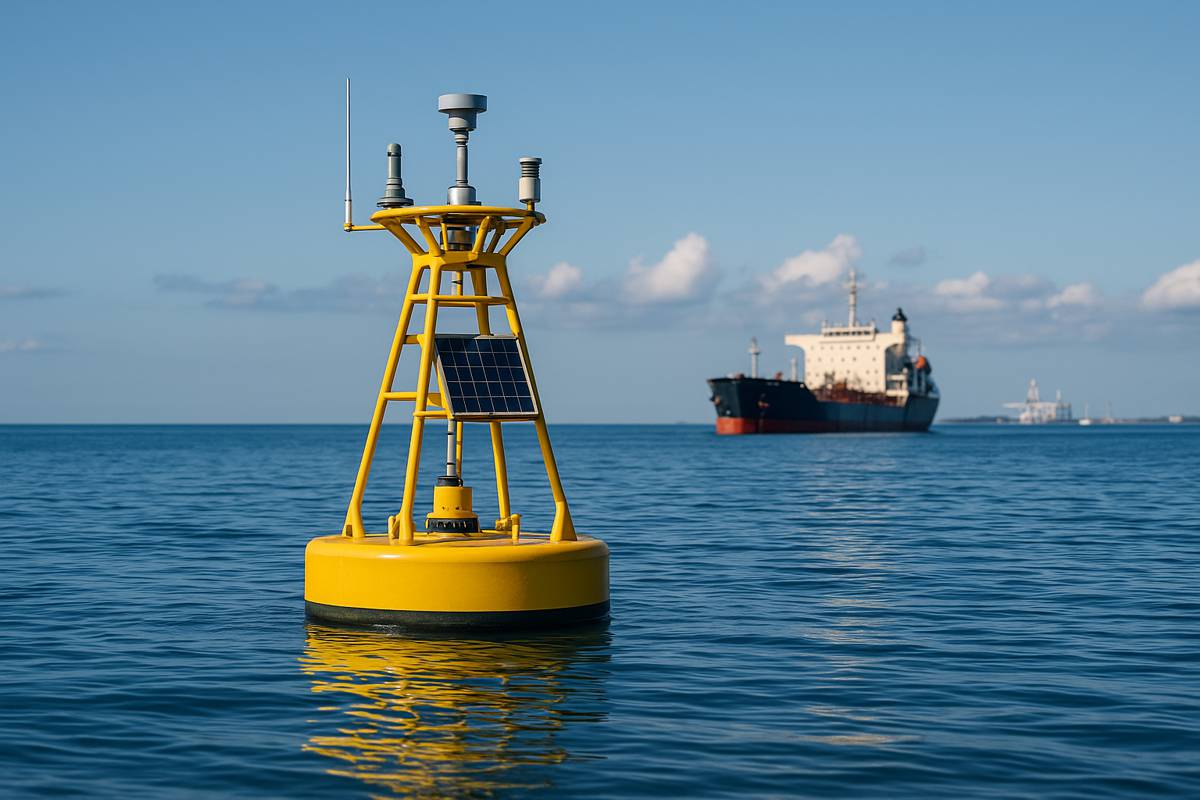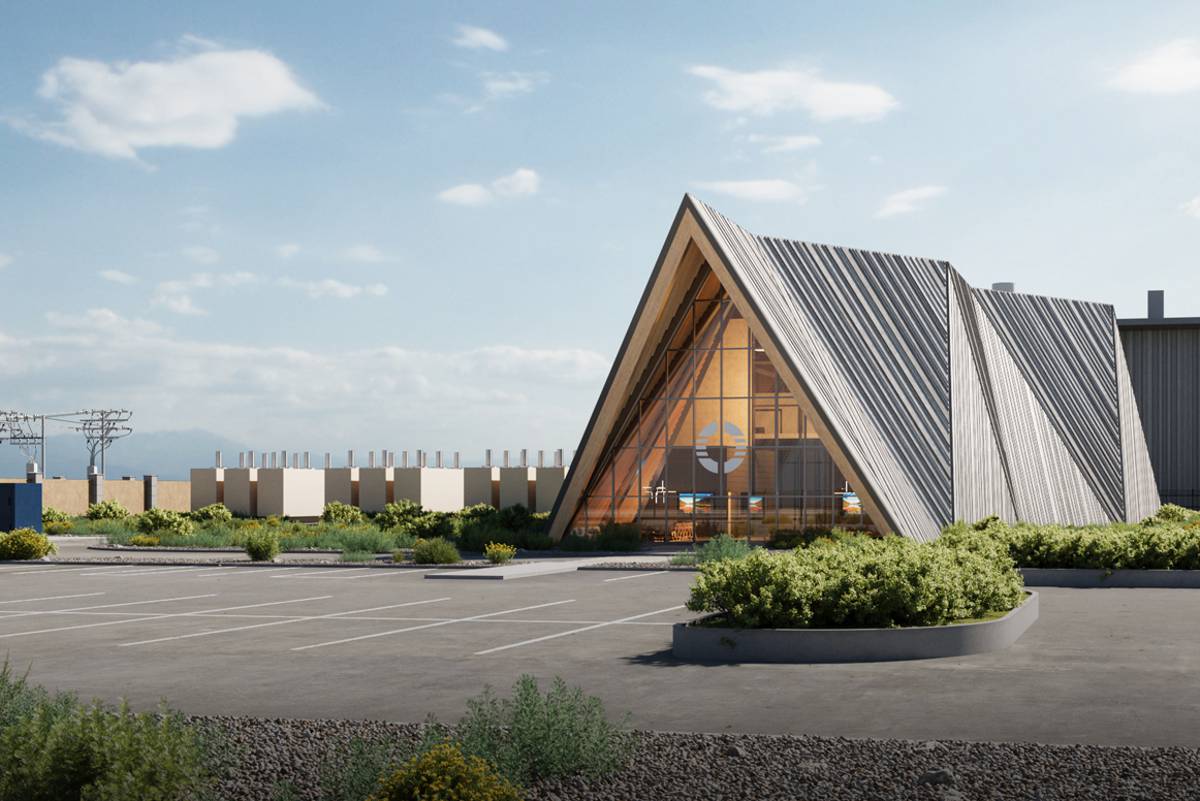Jordan’s innovative Solar Towers could herald Clean Energy
In the quest for sustainable energy solutions, an extraordinary breakthrough emerges from the deserts of the Middle East.
Researchers from Jordan’s Al Hussein Technical University and Qatar University have unveiled a pioneering design in renewable energy: the Twin Technology Solar System (TTSS). This innovative structure promises a ground-breaking leap in clean energy generation, operating tirelessly both day and night.
A Leap in Solar Technology: The TTSS Explained
At its core, the TTSS fuses two distinct solar technologies into a singular, formidable design. The solar updraft tower, a key component, leverages the principle that warm air rises. Ground-level air, heated under a vast canopy made of a greenhouse-type material, ascends through a towering cylinder, activating turbines to generate electricity.
Though solar updraft systems have shown promise in experimental setups, their transition to commercial viability has been hindered by substantial initial costs and perceived risks, given their colossal scale.
Conversely, the TTSS introduces a novel twist with its integration of cooling downdraft towers. These structures capitalize on the concept of forced downward air movement, achieved by spraying a fine water mist at the tower’s apex, making the air cooler and denser, propelling it downward to drive additional turbines.
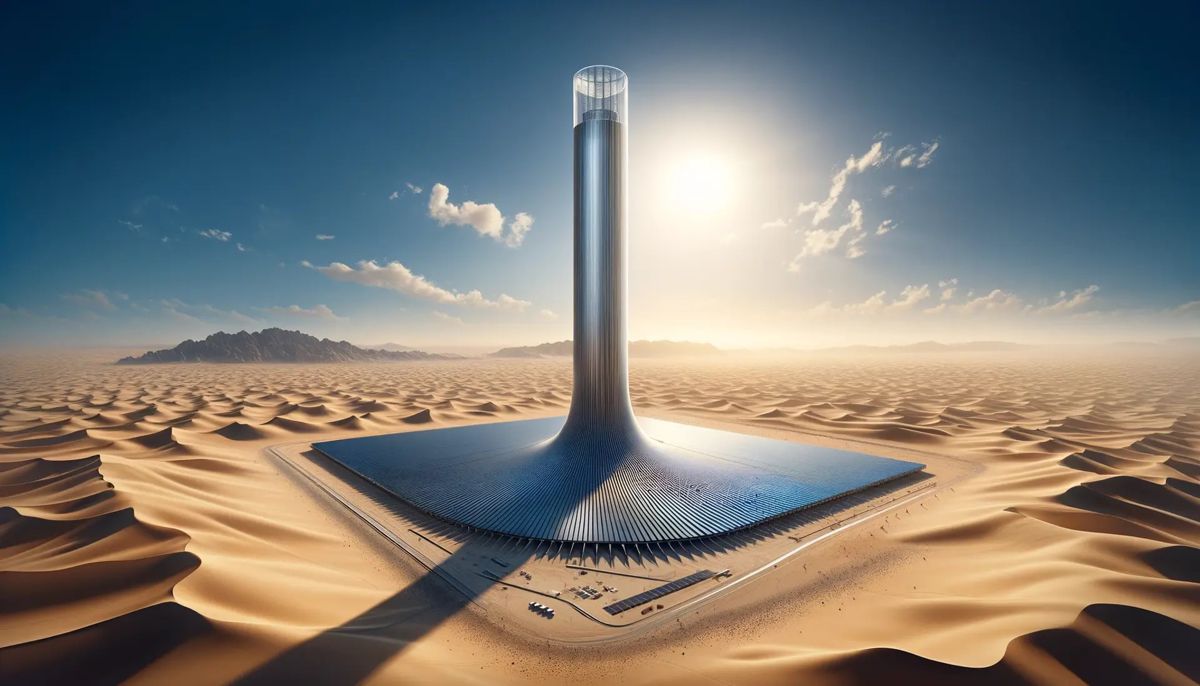
The Ingenious Structure of TTSS
Envision a structure soaring 200 meters (656 feet) into the sky, with a diameter of 13.6 meters (45 feet), crowned by a 250-meter (820-foot) wide collector. At its heart lies a 10-meter (33-foot) wide cooling tower, encircled by a 1.8-meter (5.9-foot) gap, cleverly segmented into ten individual downdraft towers.
Each tower, equipped with water misting systems and turbines, forms an integral part of this intricate energy-producing giant.
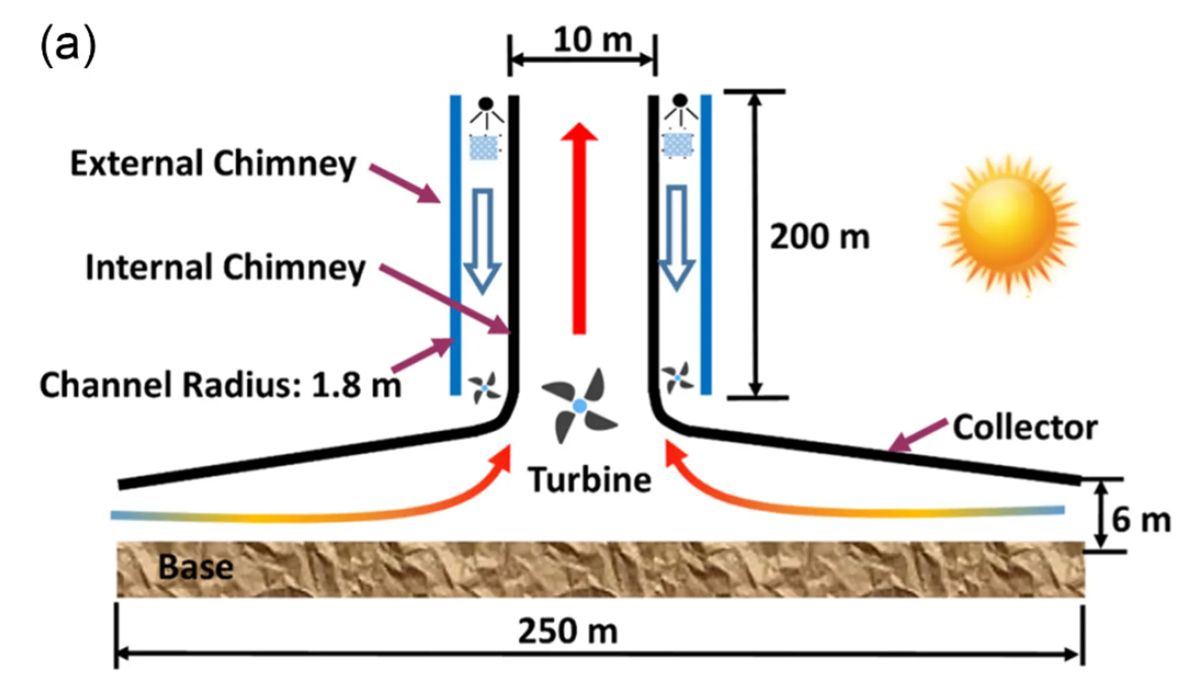
A Location Fit for Purpose
The TTSS finds its ideal home near Riyadh City. Hot, arid deserts offer the perfect backdrop for maximizing the efficiency of such a system. The researchers’ simulation tests, grounded in local weather data, project an annual energy yield of approximately 753 megawatt-hours.
The downdraft towers, operational round-the-clock, contribute about 400 MWh, while the updraft tower adds roughly 350 MWh under the blazing sun.
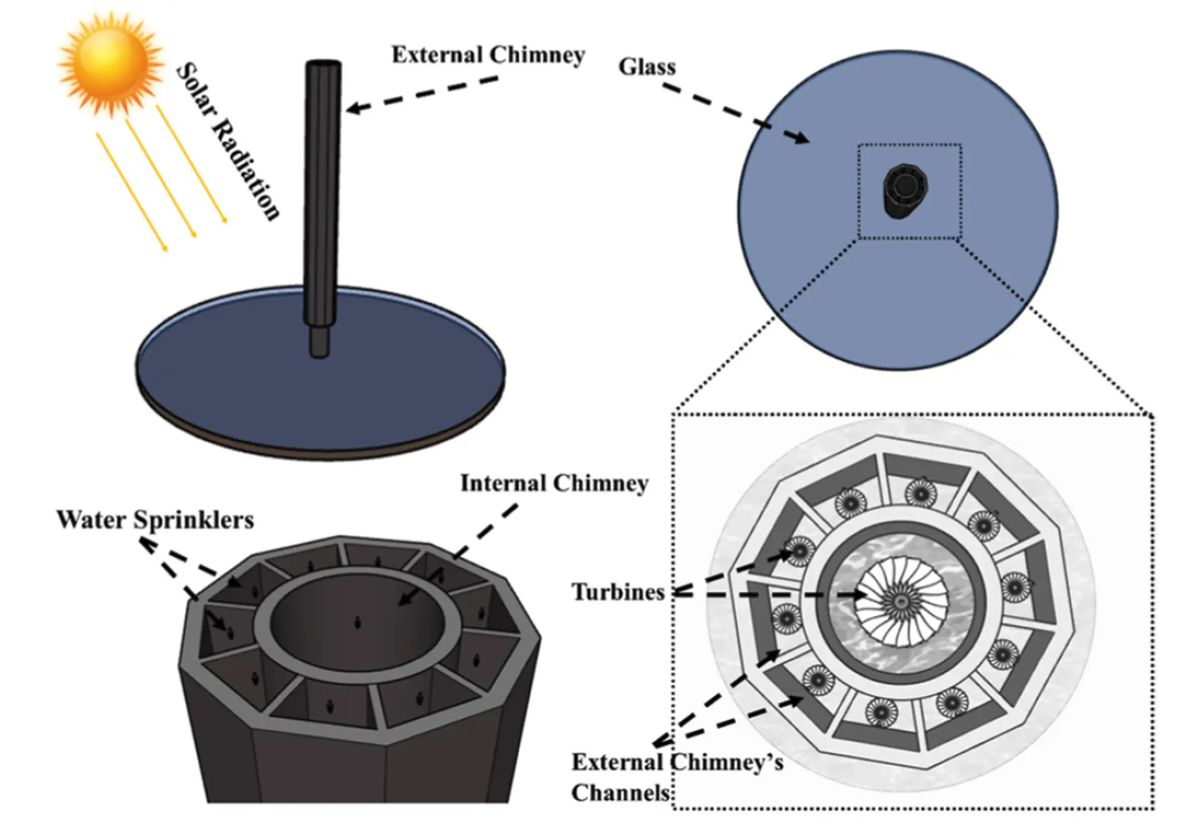
Breaking New Ground in Energy Generation
This dual approach not only demonstrates a significant improvement over traditional updraft-only systems – by more than double – but also presents a potential solution to the mismatch between energy supply and demand commonly associated with solar projects.
While the team has not yet ventured into the financial aspects, such as the levelized cost of electricity (LCoE), the TTSS represents a significant stride in sustainable energy research. However, the challenge of sourcing sufficient water for the downdraft system in arid regions like deserts remains a topic for further exploration.
A Glimpse into a Sustainable Future
The TTSS stands as a testament to human ingenuity in the face of global energy challenges. Its unique combination of updraft and downdraft technologies opens new avenues in the pursuit of 24/7 clean energy.
While hurdles remain, particularly in the realms of cost-effectiveness and resource availability, the TTSS marks a significant milestone in our journey towards a more sustainable, energy-efficient world.
As we continue to explore the vast potential of renewable energy sources, innovations like the TTSS remind us of the limitless possibilities that lie ahead. This is more than just a breakthrough in solar technology; it’s a beacon of hope for a cleaner, greener future.









